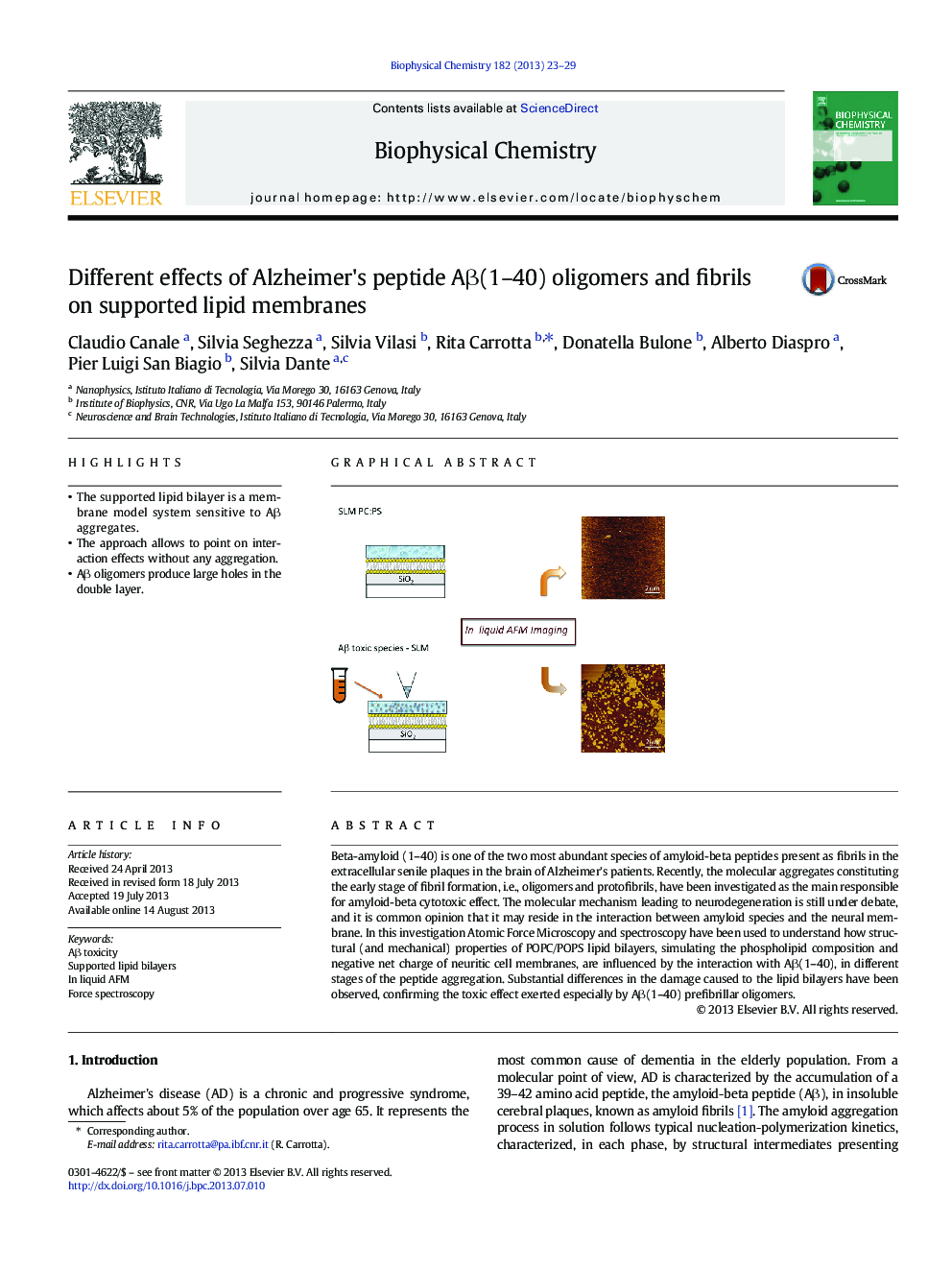| کد مقاله | کد نشریه | سال انتشار | مقاله انگلیسی | نسخه تمام متن |
|---|---|---|---|---|
| 5371106 | 1503932 | 2013 | 7 صفحه PDF | دانلود رایگان |

- The supported lipid bilayer is a membrane model system sensitive to Aβ aggregates.
- The approach allows to point on interaction effects without any aggregation.
- Aβ oligomers produce large holes in the double layer.
Beta-amyloid (1-40) is one of the two most abundant species of amyloid-beta peptides present as fibrils in the extracellular senile plaques in the brain of Alzheimer's patients. Recently, the molecular aggregates constituting the early stage of fibril formation, i.e., oligomers and protofibrils, have been investigated as the main responsible for amyloid-beta cytotoxic effect. The molecular mechanism leading to neurodegeneration is still under debate, and it is common opinion that it may reside in the interaction between amyloid species and the neural membrane. In this investigation Atomic Force Microscopy and spectroscopy have been used to understand how structural (and mechanical) properties of POPC/POPS lipid bilayers, simulating the phospholipid composition and negative net charge of neuritic cell membranes, are influenced by the interaction with Aβ(1-40), in different stages of the peptide aggregation. Substantial differences in the damage caused to the lipid bilayers have been observed, confirming the toxic effect exerted especially by Aβ(1-40) prefibrillar oligomers.
Journal: Biophysical Chemistry - Volume 182, 1 December 2013, Pages 23-29